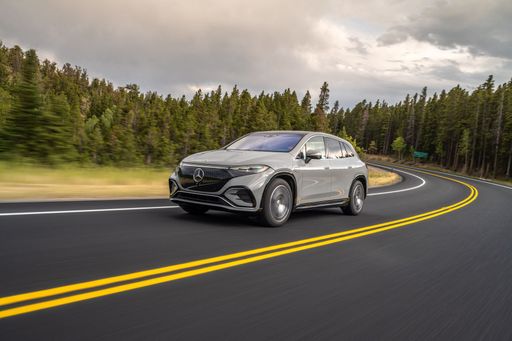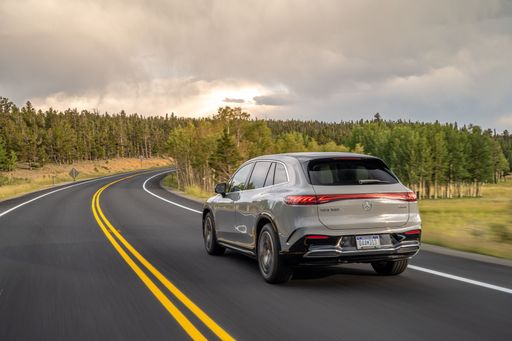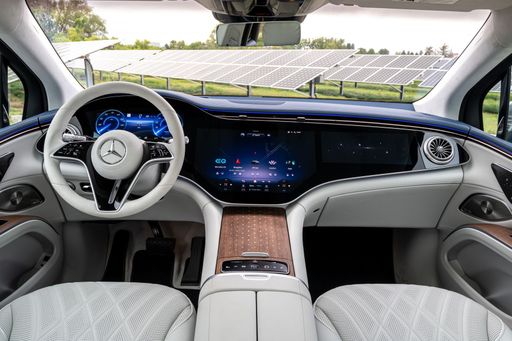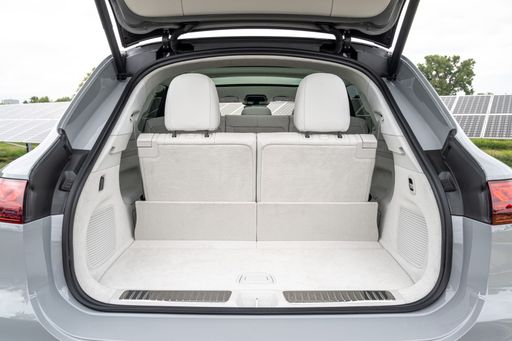Alfa Romeo Junior vs Mercedes EQS SUV – Which model is better for everyday use?
Compare performance, boot capacity, efficiency and price at a glance.
Find out which car is the better choice for you – Alfa Romeo Junior or Mercedes EQS SUV?
Costs and Efficiency:
Looking at overall running costs, both models reveal some interesting differences in everyday economy.
Alfa Romeo Junior has a decisively advantage in terms of price – it starts at 25700 £, while the Mercedes EQS SUV costs 95000 £. That’s a price difference of around 69301 £.
In terms of energy consumption, the advantage goes to the Alfa Romeo Junior: with 15.10 kWh per 100 km, it’s clearly perceptible more efficient than the Mercedes EQS SUV with 19.60 kWh. That’s a difference of about 4.50 kWh.
As for range, the Mercedes EQS SUV performs convincingly better – achieving up to 695 km, about 285 km more than the Alfa Romeo Junior.
Engine and Performance:
Under the bonnet, it becomes clear which model is tuned for sportiness and which one takes the lead when you hit the accelerator.
When it comes to engine power, the Mercedes EQS SUV has a decisively edge – offering 658 HP compared to 280 HP. That’s roughly 378 HP more horsepower.
In acceleration from 0 to 100 km/h, the Mercedes EQS SUV is noticeable quicker – completing the sprint in 4.40 s, while the Alfa Romeo Junior takes 5.90 s. That’s about 1.50 s faster.
In terms of top speed, the Mercedes EQS SUV performs hardly perceptible better – reaching 210 km/h, while the Alfa Romeo Junior tops out at 206 km/h. The difference is around 4 km/h.
There’s also a difference in torque: Mercedes EQS SUV pulls significantly stronger with 950 Nm compared to 345 Nm. That’s about 605 Nm difference.
Space and Everyday Use:
Cabin size, boot volume and payload all play a role in everyday practicality. Here, comfort and flexibility make the difference.
Both vehicles offer seating for 5 people.
In curb weight, Alfa Romeo Junior is clearly lighter – 1380 kg compared to 2695 kg. The difference is around 1315 kg.
In terms of boot space, the Mercedes EQS SUV offers clearly perceptible more room – 645 L compared to 415 L. That’s a difference of about 230 L.
In maximum load capacity, the Mercedes EQS SUV performs clearly perceptible better – up to 2100 L, which is about 820 L more than the Alfa Romeo Junior.
When it comes to payload, Mercedes EQS SUV evident takes the win – 570 kg compared to 420 kg. That’s a difference of about 150 kg.
Who comes out on top?
Overall, the Mercedes EQS SUV shows itself to be edges out slightly and secures the title of DriveDuel Champion.
It convinces with the more balanced overall package and proves to be the more versatile choice for everyday use.
 @ Mercedes-Benz Group Media
@ Mercedes-Benz Group Media
Mercedes EQS SUV
Alfa Romeo Junior
The Alfa Romeo Junior captures the essence of Italian design with its sleek lines and compact dimensions, making it an icon of elegance and performance. With a spirited driving experience and a charming retro aesthetic, it appeals to enthusiasts and casual drivers alike. This delightful car embodies the brand's rich heritage while remaining a fun and engaging option for those seeking a unique automotive experience.
details @ Alfa Romeo / Stellantis Media
@ Alfa Romeo / Stellantis Media
 @ Alfa Romeo / Stellantis Media
@ Alfa Romeo / Stellantis Media
 @ Alfa Romeo / Stellantis Media
@ Alfa Romeo / Stellantis Media
Mercedes EQS SUV
The Mercedes-Benz EQS SUV redefines luxury in the electric vehicle segment with its elegant design and cutting-edge technology. Its spacious interior provides exceptional comfort, featuring high-quality materials and innovative ambient lighting to create a serene driving environment. This SUV impressively combines sustainability with performance, offering a smooth and quiet ride without compromising on power.
details @ Mercedes-Benz Group Media
@ Mercedes-Benz Group Media
 @ Mercedes-Benz Group Media
@ Mercedes-Benz Group Media
 @ Mercedes-Benz Group Media
@ Mercedes-Benz Group Media
 @ Mercedes-Benz Group Media
@ Mercedes-Benz Group Media
 @ Alfa Romeo / Stellantis Media
@ Alfa Romeo / Stellantis Media
|
 @ Mercedes-Benz Group Media
@ Mercedes-Benz Group Media
|
|
|
|
Costs and Consumption |
|
|---|---|
|
Price
25700 - 41600 £
|
Price
95000 - 212100 £
|
|
Consumption L/100km
4.8 - 5.4 L
|
Consumption L/100km
-
|
|
Consumption kWh/100km
15.1 - 17.5 kWh
|
Consumption kWh/100km
19.6 - 21.9 kWh
|
|
Electric Range
344 - 410 km
|
Electric Range
615 - 695 km
|
|
Battery Capacity
0.4 - 51 kWh
|
Battery Capacity
108.4 - 118 kWh
|
|
co2
0 - 119 g/km
|
co2
0 g/km
|
|
Fuel tank capacity
44 - 45 L
|
Fuel tank capacity
-
|
Dimensions and Body |
|
|---|---|
|
Body Type
SUV
|
Body Type
SUV
|
|
Seats
5
|
Seats
4 - 5
|
|
Doors
5
|
Doors
5
|
|
Curb weight
1380 - 1689 kg
|
Curb weight
2695 - 3075 kg
|
|
Trunk capacity
340 - 415 L
|
Trunk capacity
440 - 645 L
|
|
Length
4173 mm
|
Length
5125 mm
|
|
Width
1781 mm
|
Width
1959 - 2034 mm
|
|
Height
1505 - 1538 mm
|
Height
1718 - 1721 mm
|
|
Max trunk capacity
1205 - 1280 L
|
Max trunk capacity
2100 L
|
|
Payload
390 - 420 kg
|
Payload
425 - 570 kg
|
Engine and Performance |
|
|---|---|
|
Engine Type
Electric, Petrol MHEV
|
Engine Type
Electric
|
|
Transmission
Automatic
|
Transmission
Automatic
|
|
Transmission Detail
Dual-Clutch Automatic, Reduction Gearbox
|
Transmission Detail
Reduction Gearbox
|
|
Drive Type
Front-Wheel Drive, All-Wheel Drive
|
Drive Type
All-Wheel Drive, Rear-Wheel Drive
|
|
Power HP
136 - 280 HP
|
Power HP
360 - 658 HP
|
|
Acceleration 0-100km/h
5.9 - 9.1 s
|
Acceleration 0-100km/h
4.4 - 6.8 s
|
|
Max Speed
150 - 206 km/h
|
Max Speed
210 km/h
|
|
Torque
230 - 345 Nm
|
Torque
568 - 950 Nm
|
|
Number of Cylinders
3
|
Number of Cylinders
-
|
|
Power kW
100 - 207 kW
|
Power kW
265 - 484 kW
|
|
Engine capacity
1199 cm3
|
Engine capacity
-
|
General |
|
|---|---|
|
Model Year
2024 - 2025
|
Model Year
2024
|
|
CO2 Efficiency Class
A, C, D
|
CO2 Efficiency Class
A
|
|
Brand
Alfa Romeo
|
Brand
Mercedes-Benz
|
What drive types are available for the Alfa Romeo Junior?
Available configurations include Front-Wheel Drive or All-Wheel Drive.
The prices and data displayed are estimates based on German list prices and may vary by country. This information is not legally binding.
